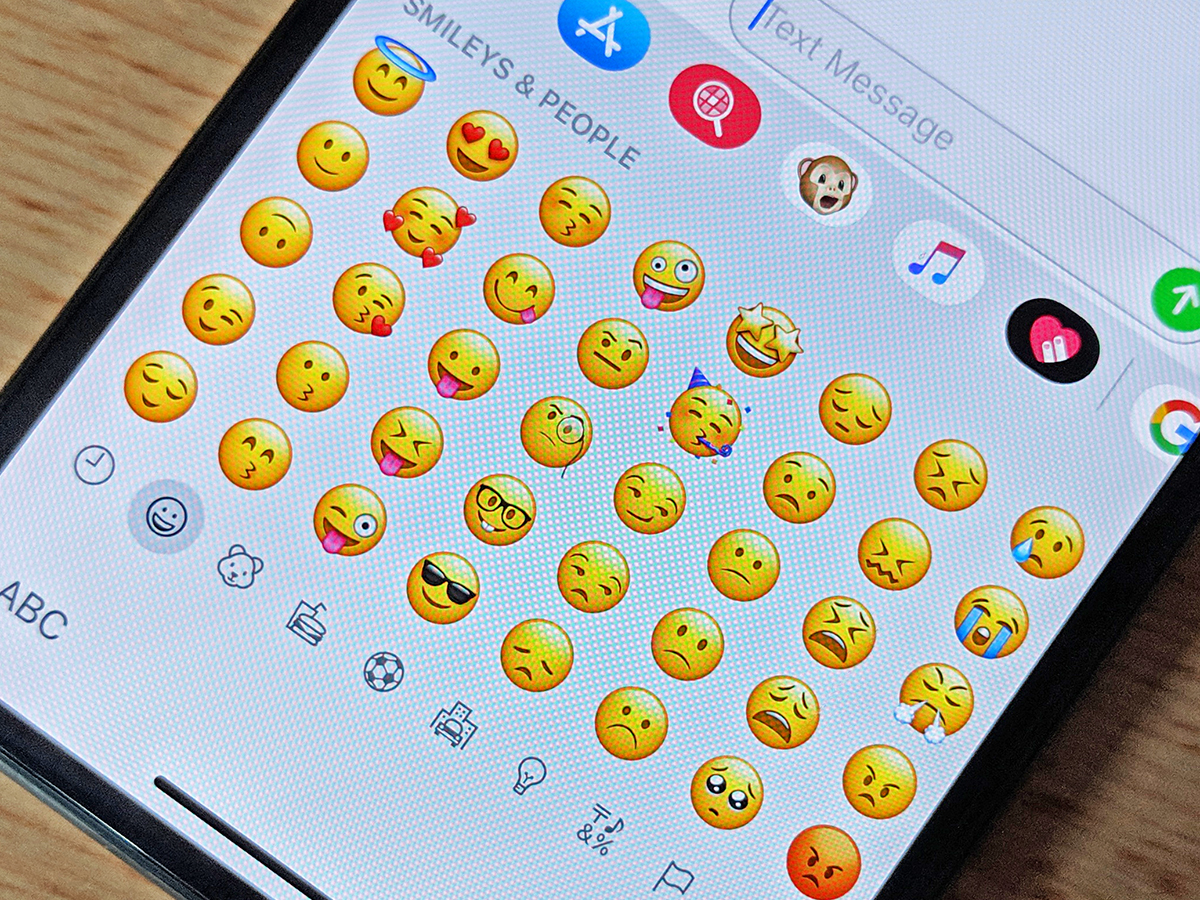

Emojis are the language shorthand of the modern age—why use words when a carefully-chosen smiley face or cartoon object speaks volumes? These colorful, compact pictures can liven up your conversations in any social media or messaging app.
When you pull up an emoji menu, you’ll find a lot of options to sort through, and these numbers just keep increasing—the Unicode Consortium adds new ones each year. This can make it hard to dig up the exact image you need. Luckily, most programs give you shortcuts so you can quickly pull up the perfect reaction.
And if no emoji suits your exact conversation, you can craft your own. Here’s how to easily find or make emojis in any app.
On the default keyboards for Android and iOS
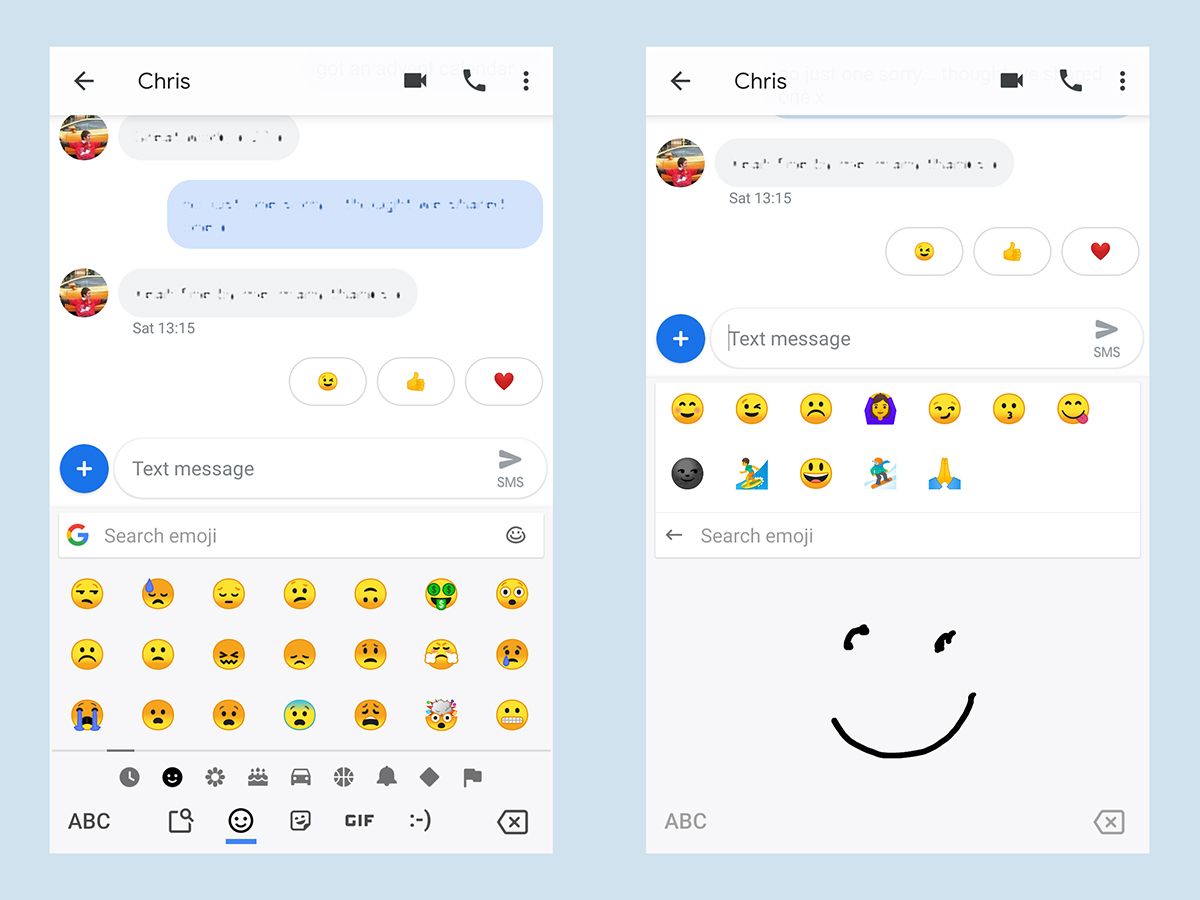
When you start typing text in most apps, your operating system’s standard keyboard will pop up. These default options make it easy to access pages of emojis, although the exact settings will depend on whether you’re using an Android or iOS device.
In Android, you need to tap the emoji button at the bottom of the keyboard, down by the space bar. At this point, the keyboard will switch to showing emojis. You can swipe left or right to work through the gallery one page at a time, but if you have a general idea of what to look for, it’s faster to select a specific category—faces, foods, sports, and so on—by tapping one of the icons at the bottom of the board. The icon that looks like a clock contains your recently-used emojis, so if you usually gravitate toward the same symbols, grab your favorite from this tab.
If you already know exactly which image you want, then you can speed up this process by entering search terms like “rocket” or “smiley” in the text box above the emojis. When you’re not sure of the exact search term to use, try drawing the symbol in question: Tap the drawing icon on the top right of the keyboard, sketch it out, and Android show you the emojis that most closely match your scrawl. Once you’ve discovered the right one, tap that emoji to insert it.
With an iOS keyboard, your options are similar. In this case, the emoji button lives down in the lower left-hand corner. Tap it once to switch to emoji mode, which will list your frequently-used symbols first. Again, you can swipe left or right to scroll or tap the buttons at the bottom to quickly jump to categories.
In this case, you won’t find an option to search through or draw emojis. Sadly, you need to hunt through the pictures until you find the ones you’re looking for. Then tap on an emoji to drop it into your message.
In other apps
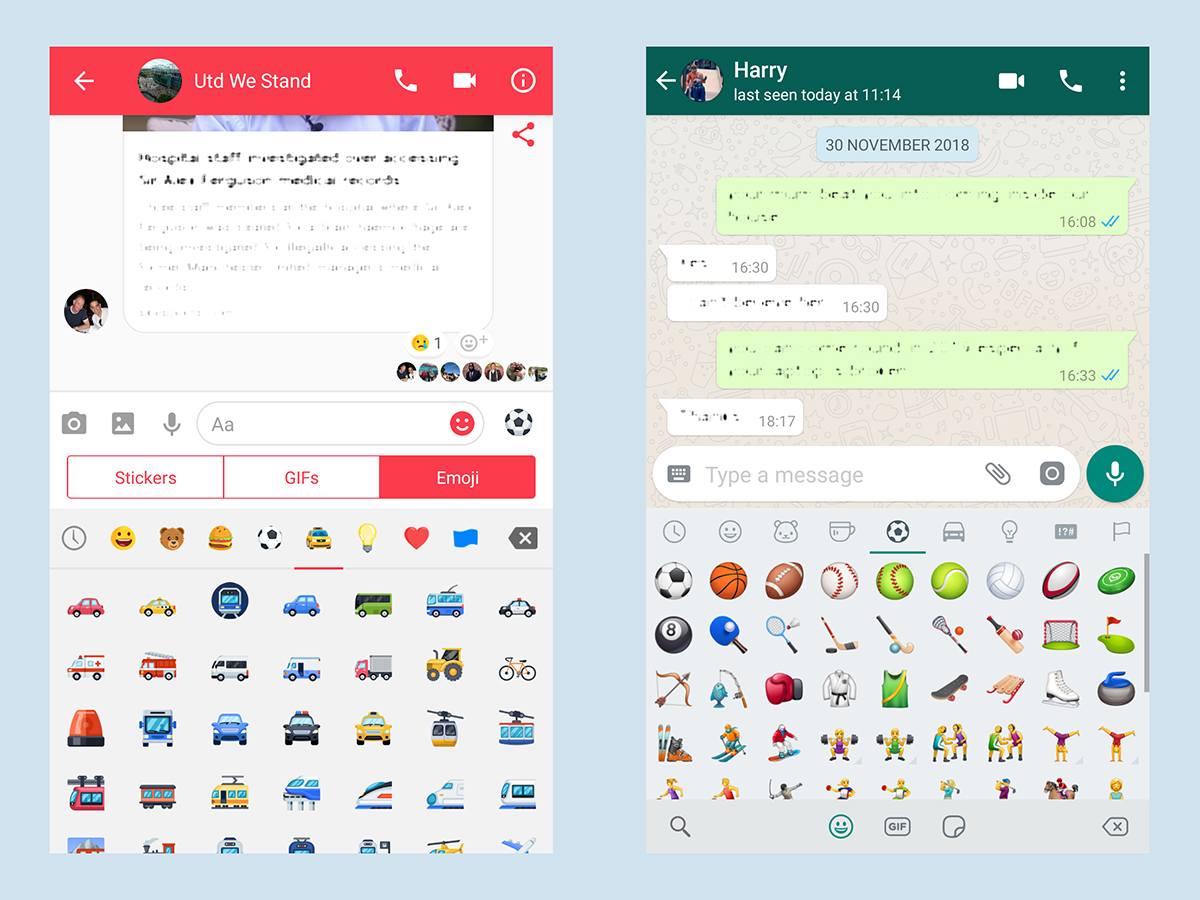
Some messaging apps give you a customized keyboard that makes it simpler to drop symbols into your chats. Don’t worry if the emojis seem to vary slightly, because certain programs, such as Facebook Messenger and WhatsApp, use their own designs rather than relying on the pictures provided by Android or iOS. As a result, you might see several different variations on the smiley face, the rain cloud, and all the other emojis, depending on the app.
In WhatsApp, the emoji button sits at the left of the text-input box. Tap this to go straight to the emoji keyboard, which has a layout similar to the default versions. You can browse by category or enter specific search terms to find the right picture faster.
Facebook Messenger is slightly different as well. Here, the emoji button sits to the right of the text-entry box. Tap it to bring up the full list of available emojis. With this one, although you can still browse by category, there’s no search function.
If you prefer Snapchat for your messaging needs, you’ll find the emoji button on the far left, under the text-input box. On the downside, this emoji keyboard lacks a search function. But on a positive note, in addition to the standard cartoony images, you’ll have access to your own Bitmoji—Snapchat’s take on personalized emoji. Read on for more details about those.
Default options for making personalized emojis
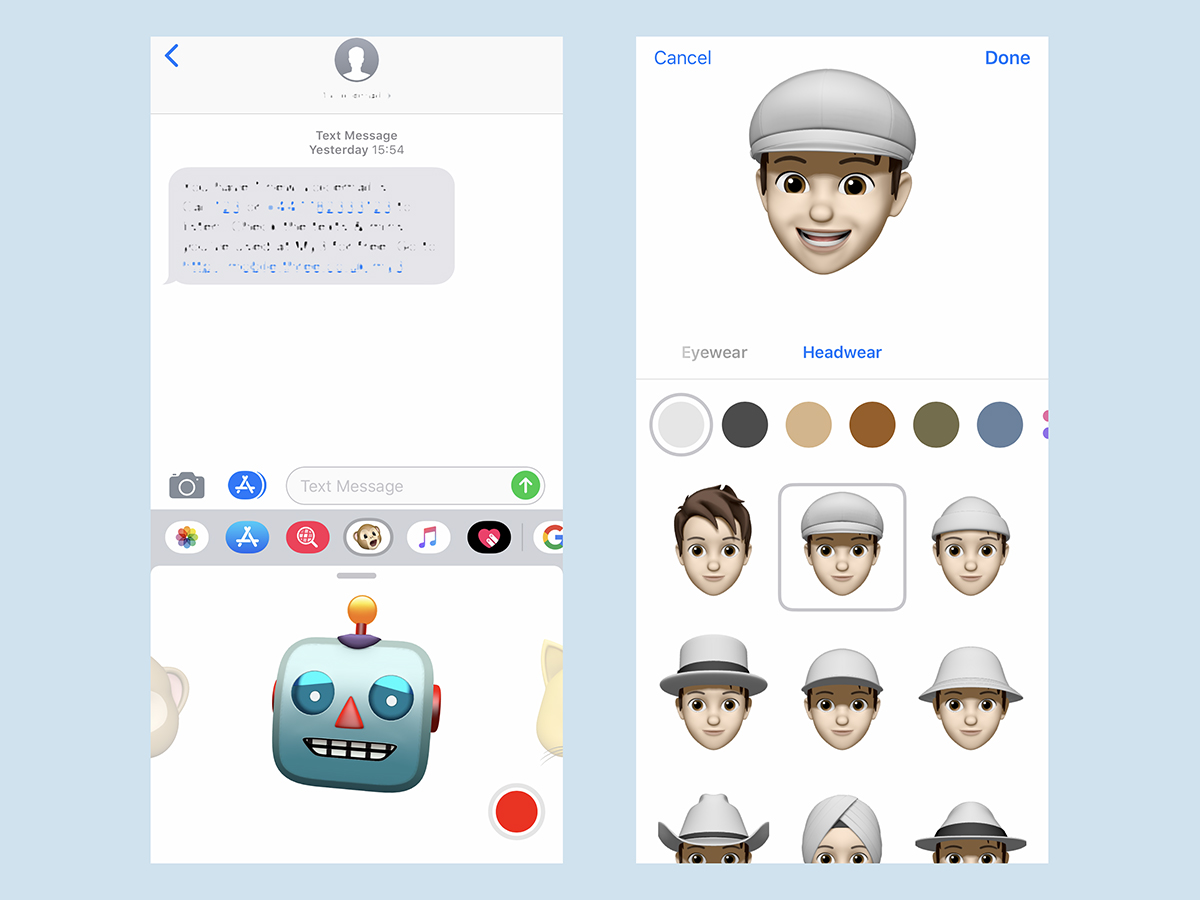
To add a personalized touch to your messages, try custom emoji. Both Android and iOS let you jazz up your messages with caricatures based on your face or, in the case of iOS, on various cartoon characters.
Android calls your personalized emoji a Mini. To enable it, you first need to install the Google Gboard keyboard. It comes as the default option on phones that run stock Android, such as the Pixel line. If you own a different model, you can download the keyboard here.
Once you have the Gboard, open a text box, tap the button to open the emoji keyboard, and hit the stickers button to the left of the GIF button. Tap the far right sticker, which looks like a face, and then click Create. Follow the prompt that asks you to snap a selfie, and then the program will suggest some emojis based on your face.
You’ll see images in a variety of artistic styles, and you can tweak them by hitting the Customize button. If you have trouble choosing, then you can create several Minis. Once you’ve finished your avatar, you can drop it into any message: Just reopen the emoji keyboard, tap the stickers section, and you’ll find your personalized emoji there.
Over on iOS, personalized emojis are only available on the iPhone X and the iPhones launched in 2018. The avatars based on your face are called Memojis, while those based on characters like dinosaurs and ghosts fall under the term Animoji. With both options, you can record a video of your face, then map these motions onto the cartoons so they appear to be speaking in your voice with your expressions. Because of this, you have to send them as short video clips (under 30 seconds), which include audio.
To get started, open the keyboard, tap the Animoji button (the monkey) and scroll left or right to pick your character. If you scroll all the way to the far left, you’ll find a New Memoji option. Tap this to create a new custom avatar based on your face. You get to pick skin color, hairstyle, eyebrow shape, facial hair, headwear and more. Once you have it, tap the red button to start and stop recording what you want the avatar to say and do. Then hit the up arrow to drop the clip into a message.
Third-party apps for creating your own emojis
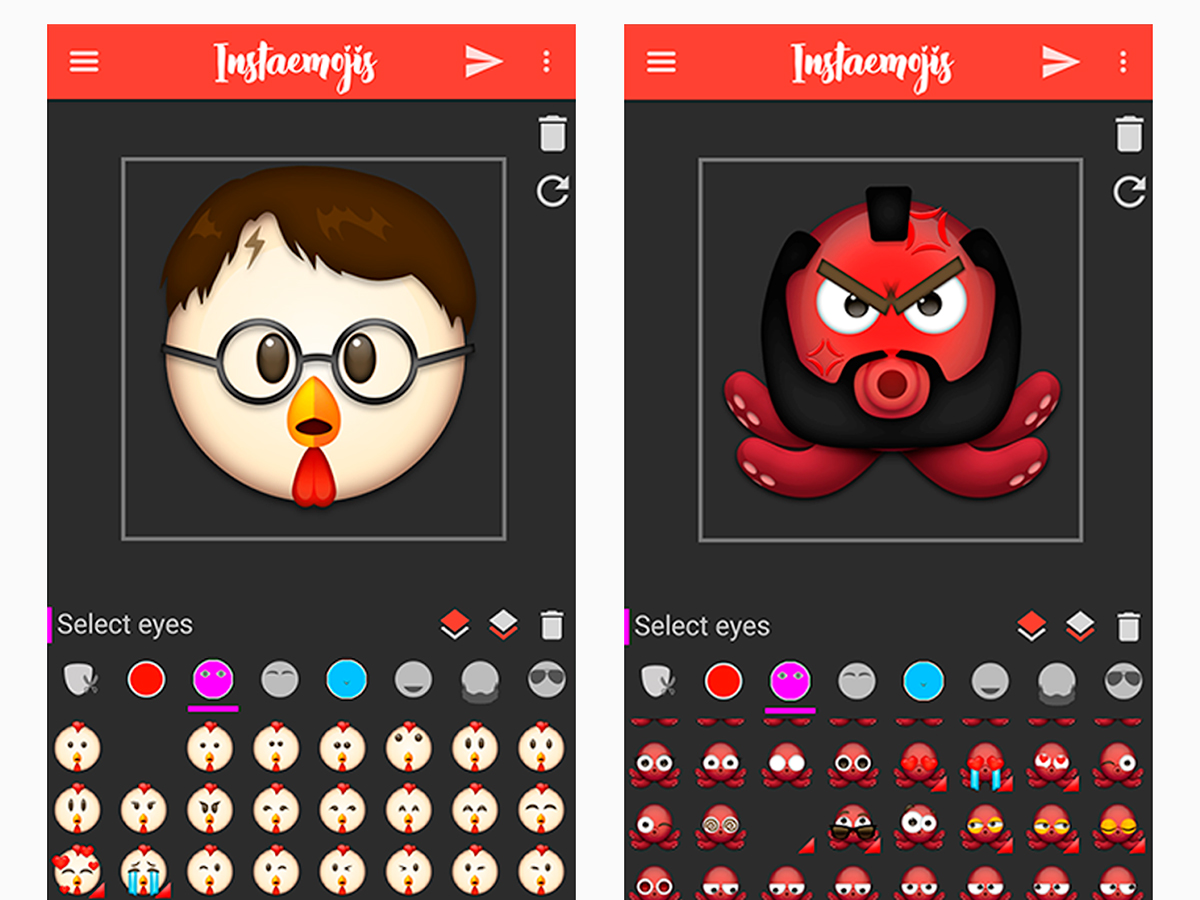
Sure, Android and iOS have tools that let you craft personalized emojis. But third-party apps let you go even further.
Take Emoji Me Animated Faces, one of the best choices for iOS. It lets you create a personalized emoji based on a selfie or built from scratch, with a wide range of hair, skin, and face styles to pick from. This app is free, but you can purchase customization packs with additional hair, make-up, and other options for $2 to $19.
Emoji Maker for Android offers a similar breadth of choice when it comes to the different face and hair styles. However, with this program, you can’t use a selfie photo as a template to get you started. The free version includes plenty of customizations, but if you can’t find exactly what you’re looking for, you can also buy extra packs for $1 to $24.
As we mentioned previously, Snapchat integrates customized emoji called Bitmoji (for Android and iOS). Even if you don’t use the photo-sharing program, you can also install Bitmoji as a separate free app—it lets you create emojis that show a cartoon version of yourself in all kinds of situations, from drinking coffee to riding a unicorn. Then you can drop your images into any app, not just Snapchat.
Finally, we’d also like to mention Emoji Builder. This is a free website rather than an app, but you can still pull it up on your phone. It lets you tweak the standard set of emojis in all kinds of ways: You can add a monocle or a halo to the standard smiley face, or combine the clown nose with the alien eyes. Once you do, Emoji Builder lets you drop your creations into any messaging app.
